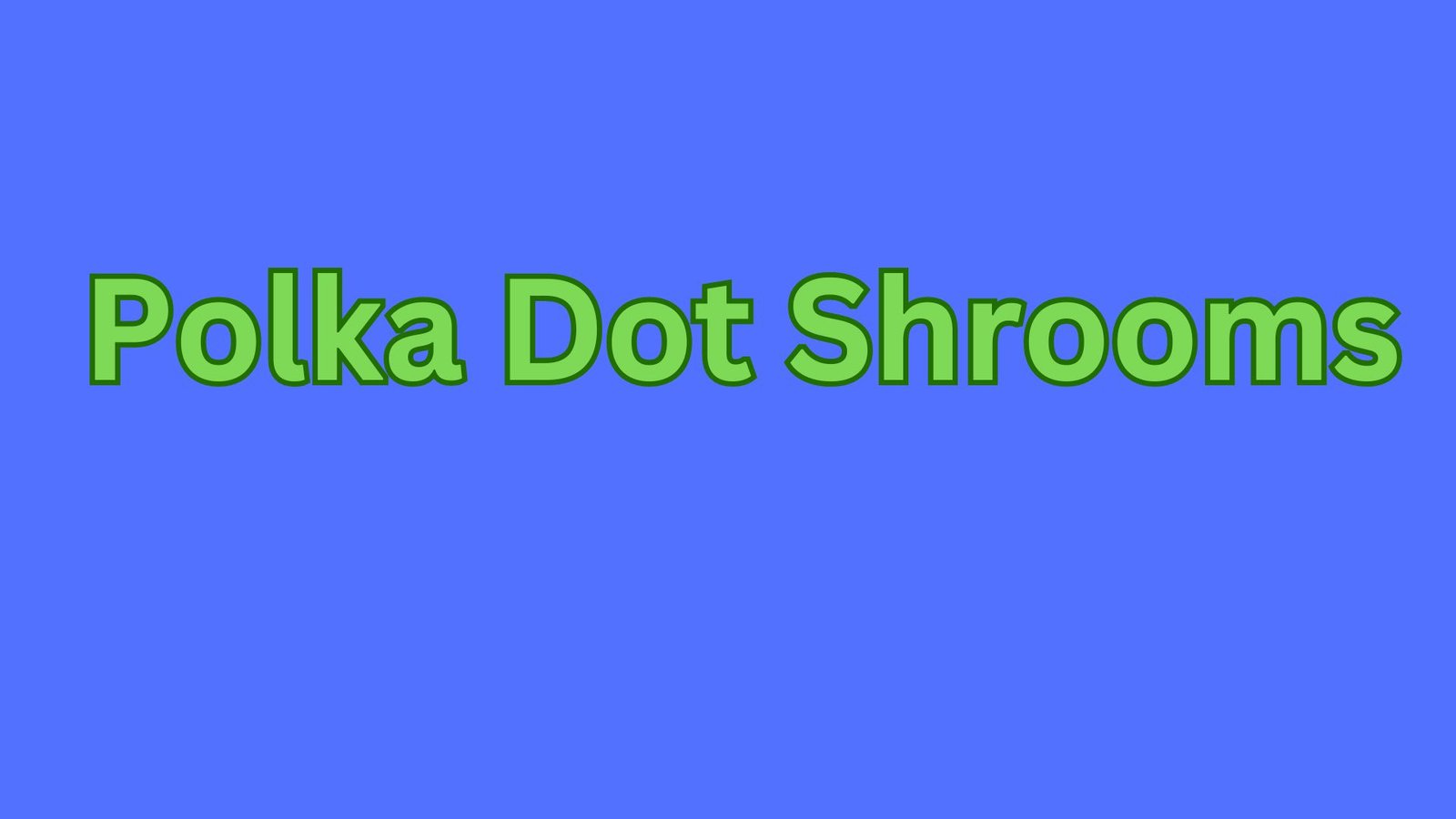Polka dot shrooms, also known as Amanita muscaria or the fly agaric mushroom, are among the most visually striking and recognizable fungi in the world. With their bright red caps adorned with white speckles, these mushrooms have captivated the imagination of artists, storytellers, and nature enthusiasts alike. In this article, we will explore the fascinating world of polka dot shrooms, diving into their biology, cultural significance, uses, and potential effects.
Polka dot shrooms have a long history, both in nature and in human culture. Their vivid appearance has made them a staple in fairy tales, folklore, and popular culture. While they are often admired for their beauty, it’s essential to understand their complex nature, including the potential risks and benefits associated with them. This article will take you on a vibrant journey into the world of polka dot shrooms, exploring everything from their biology to their cultural significance.
The Biology of Polka Dot Shrooms
Physical Characteristics
Polka dot shrooms are easily identifiable by their iconic red cap, which can range from bright red to orange-red, typically measuring between 8 to 20 centimeters in diameter. The cap is covered in white warts or dots, giving the mushroom its distinctive polka dot appearance. The gills underneath the cap are white and free from the stalk, while the stem is white to yellowish and can grow up to 20 cm tall.
The spore print of polka dot shrooms is white, and the mushrooms reproduce through spores released from these gills. Their unique morphology not only serves as a visual attraction but also plays a role in their ecological interactions.
Habitat and Distribution
Polka dot shrooms thrive in temperate and boreal forests across the Northern Hemisphere. They are commonly found in association with coniferous trees like pine, spruce, and fir, as well as broadleaf trees such as birch and oak. These mushrooms prefer acidic soils and often emerge after the first rainfalls of late summer to early fall.
While their appearance may seem whimsical, the presence of polka dot shrooms’s is a vital indicator of a healthy forest ecosystem. They form mycorrhizal relationships with tree roots, helping trees absorb water and nutrients while receiving carbohydrates in return.
Cultural Significance
Folklore and Myths
Throughout history, polka dot shrooms’s have been steeped in mythology and folklore. In many cultures, they are associated with magic and mystery. For instance, in Northern European folklore, these mushrooms are often depicted as the dwelling places of fairies and other mystical creatures. Their vibrant colors and unique shape have made them symbols of the fantastical, leading to their depiction in fairy tales and children’s stories.
In Siberian shamanistic practices, the fly agaric mushroom was used as an entheogen, believed to facilitate communication with the spirit world. This cultural significance continues to captivate people today, making polka dot shrooms’s a popular subject in art and literature.
Artistic Representation
The striking appearance of polka dot shrooms’s has inspired countless artists throughout history. From illustrations in classic fairy tales to modern digital art, their visual appeal remains timeless. Artists often use these mushrooms to evoke themes of enchantment, nature, and the mystical qualities of the forest.
In contemporary culture, polka dot shrooms’s are frequently featured in fashion, home decor, and even as motifs in video games. Their association with whimsy and fantasy continues to resonate, making them a beloved icon in various artistic expressions.
Culinary Uses
Traditional Uses
While polka dot shrooms’s are not commonly consumed due to their toxic properties, they have been used in traditional practices in some cultures. In Siberia, for instance, they were consumed for their psychoactive effects during religious rituals and celebrations. However, such practices require extensive knowledge and caution, as the mushroom can be toxic if not prepared correctly.
Culinary Caution
Despite their historical use, it is crucial to approach polka dot shrooms’s with caution. The active compounds in these mushrooms can have varying effects depending on the dosage and preparation method. For those unfamiliar with wild mushrooms, it is generally advised to avoid consumption due to the risk of poisoning and adverse effects.
Psychoactive Properties
Active Compounds
Polka dot shrooms’s contain several psychoactive compounds, the most notable being muscimol and ibotenic acid. Muscimol is known for its sedative and hallucinogenic effects, while ibotenic acid can cause excitatory effects. The ratio of these compounds can vary, making the effects unpredictable and potentially dangerous.
Historical Uses
Historically, polka dot shrooms’s have been used in various cultures for their psychoactive properties. In addition to Siberian shamanism, some indigenous groups in North America utilized them for spiritual ceremonies. These practices highlight the complex relationship between humans and fungi, showcasing the potential benefits and risks associated with their use.
Health Risks and Considerations
While polka dot shrooms’s have fascinated many, it is essential to acknowledge the health risks associated with them. Symptoms of toxicity can include nausea, vomiting, hallucinations, and in severe cases, seizures or coma. Individuals with underlying health conditions or those taking medications should exercise extreme caution.
For those interested in the psychoactive effects of polka dot shrooms, it is crucial to seek guidance from experienced users or professionals in ethnobotany. The potential for adverse reactions underscores the importance of education and responsible use.
Conclusion
Polka dot shrooms’s represent a vibrant and enchanting aspect of the fungal kingdom. Their stunning appearance, cultural significance, and complex biological characteristics make them a fascinating subject for study and appreciation. While they hold a place in mythology and artistic expression, it is essential to approach them with respect and caution.
ALSO READ:Loans Cafe Wessel: Your Go-To Source for Quick and Easy Financing
FAQs
What are polka dot shrooms?
Polka dot shrooms, scientifically known as Amanita muscaria, are brightly colored mushrooms characterized by their red caps with white spots. They are known for their psychoactive properties and cultural significance.
Are polka dot shrooms edible?
While some cultures have used polka dot shrooms in traditional practices, they are generally not considered safe for consumption due to their toxic properties. Eating them can lead to severe health risks.
What effects do polka dot shrooms have?
Polka dot shrooms contain psychoactive compounds like muscimol and ibotenic acid, which can induce hallucinations, sedation, or excitatory effects. However, the effects can vary significantly based on dosage and preparation.
Can polka dot shrooms be found in my area?
Polka dot shrooms are typically found in temperate and boreal forests across the Northern Hemisphere, often associated with coniferous and broadleaf trees. However, their presence can vary by location and season.
How should one handle polka dot shrooms if found in the wild?
If you encounter polka dot shrooms in the wild, it is crucial to avoid touching or consuming them unless you are knowledgeable about fungi. Always consult with experts or guides before foraging for mushrooms.

